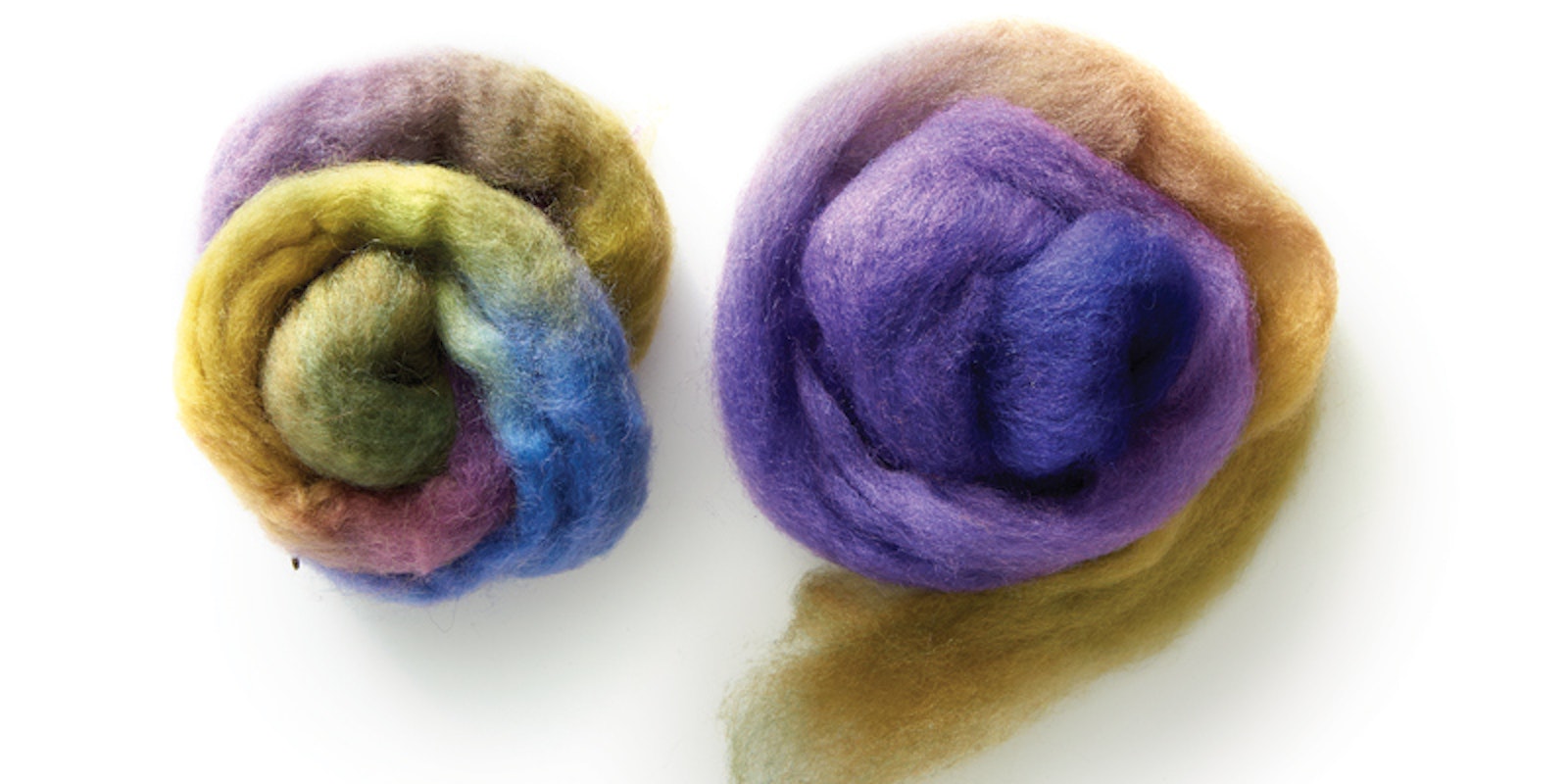Three Reasons Every Spinner Should Make Art Yarns
<a href="https://spinoffmagazine.com/three-reasons-every-spinner-should-make-art-yarns/">Continue reading.</a>
https://spinoffmagazine.com/cdn-cgi/image/format=auto/https://www.datocms-assets.com/75073/1656652302-header-64.jpeg?auto=format&w=900
Predrafting loosens compacted fibers, making them easier for spinning. Photo by Joe Coca
| |  | | | Sarah Anderson developed a “Wrap-and-Roll” technique that combines elements of corespinning with opposite twist for an art yarn all her own. | I’ve heard a lot of handspinners sniff and say in a skeptical voice, “I don’t want to make novelty yarns.” They may be envisioning what I call “stuff on my yarn” (after the famous-for-fifteen-minutes website “Stuff on My Cat,” which featured photographs of just that).
But there’s a lot more to art yarn—also known as designer yarn, novelty yarn, or textured yarn—than just the addition of foreign objects. (Not that there’s anything wrong with that.) Here are a few reasons why you should try adding some art elements to your next yarn.
- It will make the rest of your spinning better.
Do you want to make a perfectly even worsted yarn? A good way to practice is by spinning a slub yarn. What? Absolutely. It will help you judge the staple length of a fiber and practice drafting out just enough to keep it intact. Art yarns require attention, dexterity, and an understanding of twist that will help you as you make the simplest, most straightforward yarns. - It will serve as the basis for some wonderful textiles.
Whether you use your yarns for knitting, weaving, crochet, or other purposes, some textured elements can be a terrific accent. Weavers use bouclés to great effect, and knitters can do wonderful things with beaded yarns. Sure, art yarns can be decoration pure and simple, but when made well, they are strong and useful. - Even serious spinners need to play.
And art yarns are playful! Many of them break the “rules” in consistent, thoughtful ways that are fun to do. Twist some yarns in the other direction! Ply unevenly . . . on purpose! Use wild colors and uneven batts and just see what happens.
Sarah Anderson’s video, Building Blocks of Spinning, is full of both traditional and textured yarns, and the results of both are absolutely stunning. Sarah happily bridges the apparent gap between the plain-yarn spinner and the arty spinner and gives step-by-step directions for balancing creativity and technique.

|





